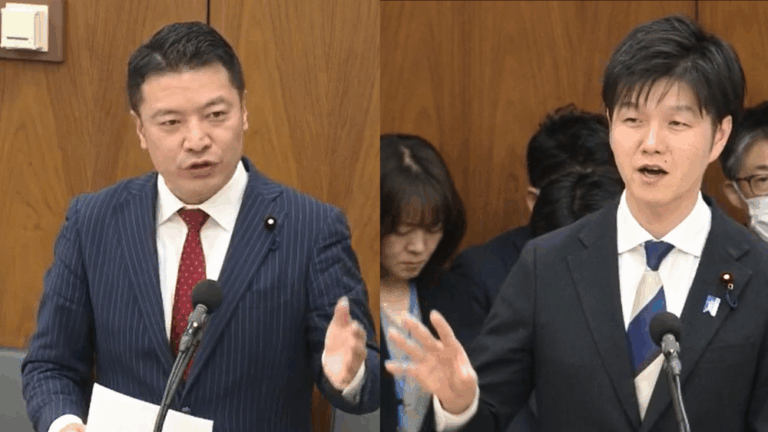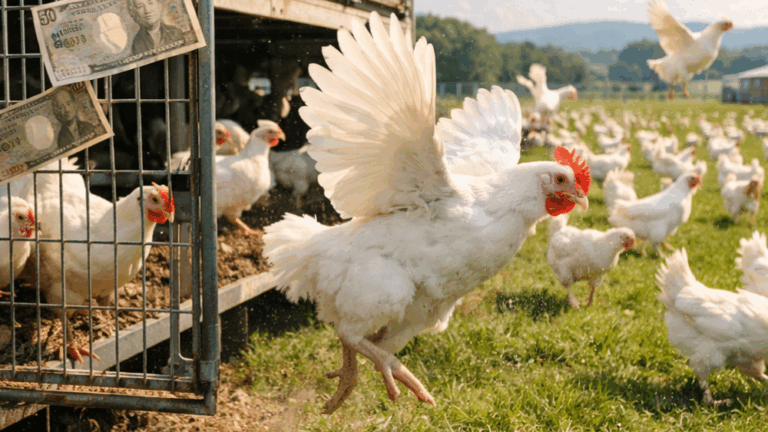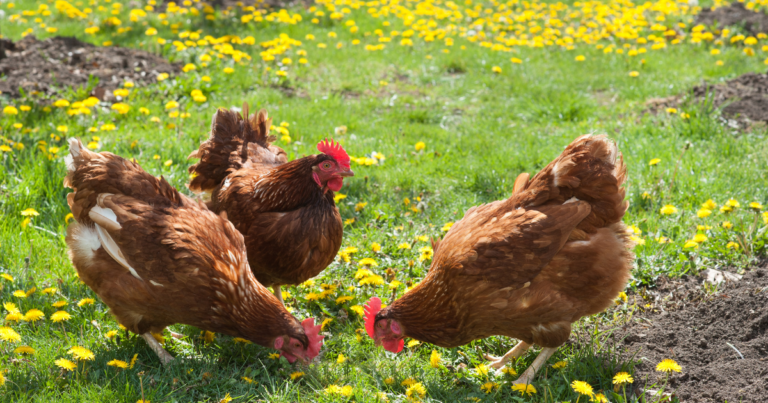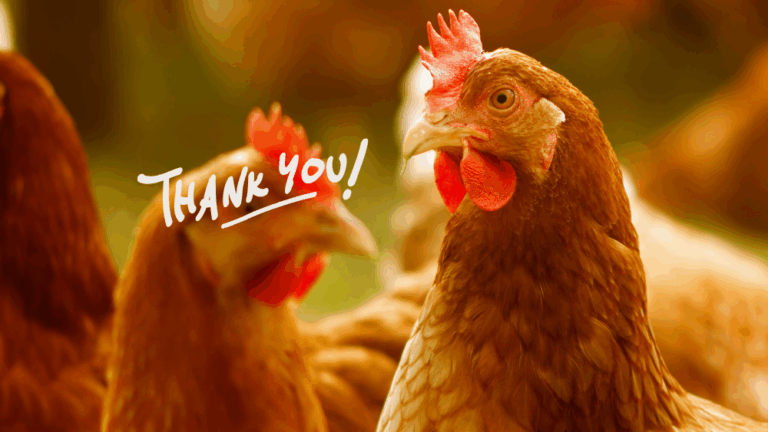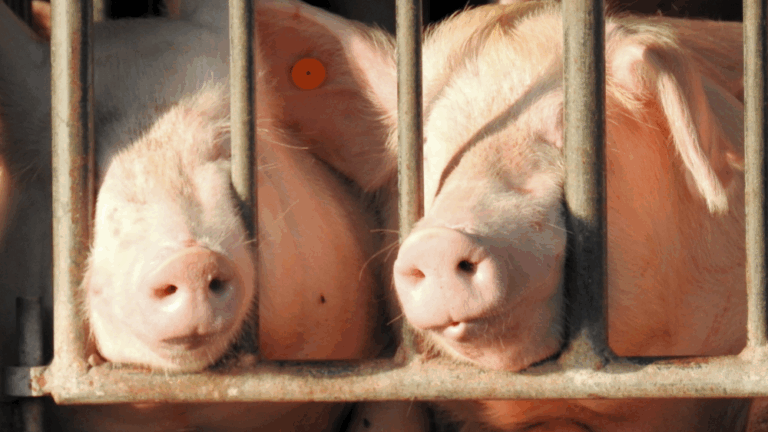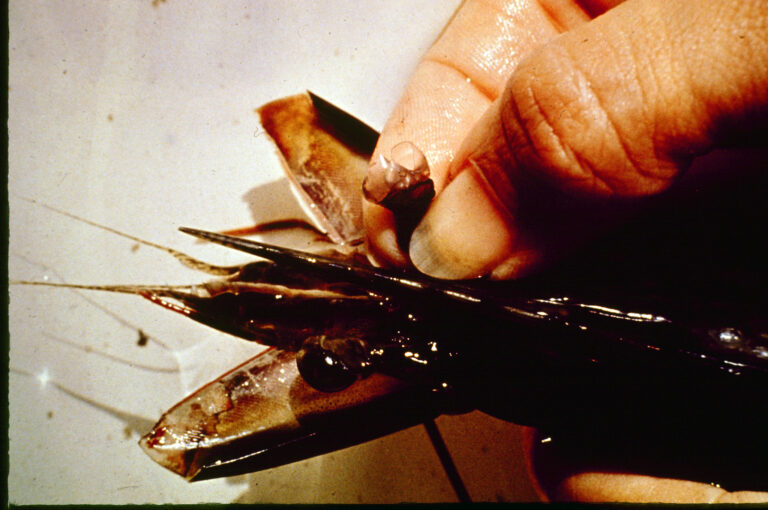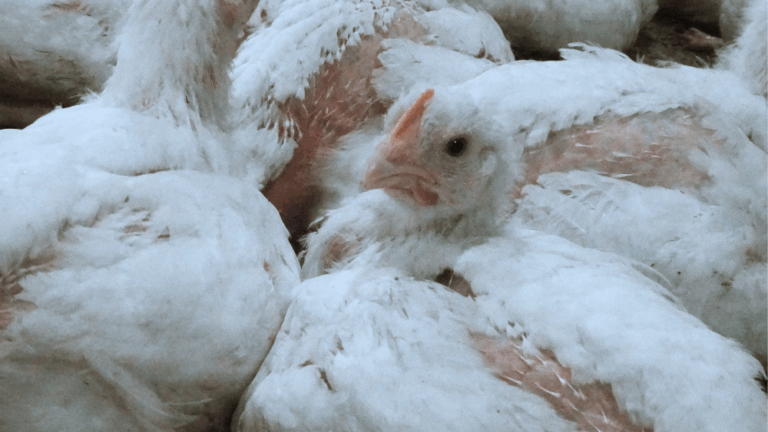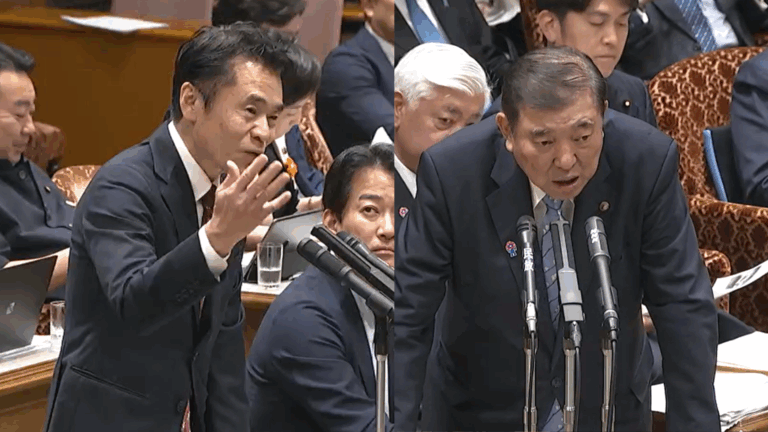There are various support systems for the livestock industry implemented by the country, but one of them is Comprehensive Subsidies for Developing Strong Agriculture & Leaders. As previously reported in another article, from 2018, when using this grant to establish a local meat production center (slaughterhouse), consideration for animal welfare has become required.
In the case of implementing the maintenance of local meat centers among livestock product processing facilities, efforts shall be made to effectively utilize the recycling of slaughter residue, etc., and handle livestock in consideration of animal welfare.
Although it is not specific, it was a step forward in animal welfare that such a sentence was added to the standard of the grant system.
Only “Local Meat Centers” require consideration for animal welfare
However, this sentence has an issue. The applicability is limited to “local meat centers” and does not include “poultry processing plants”. Local meat centers are facilities for slaughtering cows and pigs, and poultry processing plants are facilities for slaughtering poultry such as chickens and ducks. Why are chickens and ducks being excluded from “consideration for animal welfare”, even though poultry processing plants are eligible for subsidies as well? When the Ministry of Agriculture, Forestry, and Fisheries (MAFF) was contacted regarding this point, the reply was as follows.
Based on the contents of notifications issued by the Ministry of Health, Labor, and Welfare, “Guidelines on slaughterhouse facilities and equipment” (1994) and “Installation of drinking water equipment for livestock in slaughterhouses that will be newly constructed or reconstructed” (2017), the notes are assumed to be for when carrying out the maintenance of local meat centers, so it is not being listed for poultry processing plants.
The phrase “animal welfare” does not appear in these guidelines and notifications, but they all encourage the installation of drinking water facilities at cow and pig slaughterhouses. However, if such a public document is the reason for animal welfare being required in subsidy standards for local meat centers, the omission for poultry processing plants seems inconsistent. This is because, regarding poultry processing plants as well, MAFF issued a notification to the prefectural agricultural administration department about the problem of leaving chickens for a long time at slaughterhouse, and based on this MHLW and the Ministry of the Environment have sent notices to each prefecture requesting improvement.
Notifications from MAFF
Regarding well-planned shipment of chickens to poultry processing plant
2018/3/26
Regarding the renewal of egg-laying chickens, in addition to the fact that many chicken farmers do this during the summer and the beginning of the year when demand is low, the number of chickens raised has recently been increasing. Shipments to chicken poultry slaughterhouses are expected to increase more than before. For this reason, if shipments of chickens to poultry slaughterhouses are excessively concentrated, and poultry processing companies, etc., have been forced to overcrowded transport and lengthen storage time at the poultry slaughterhouses, there is a concern that this may hinder proper compliance with storage standards set forth in relevant laws and regulations. Therefore, the prefectural government within your jurisdiction is requested to inform relevant parties including poultry farmers that poultry farmers and poultry slaughterers should make arrangements and pay due attention to relevant laws and regulations, etc. especially when shipping chickens to poultry slaughterhouses.
[References]
・ Standards for rearing and storage of industrial animals (Primary Office Notification #22, 1987/10/9)
No 3. Maintenance of hygiene and safety of industrial animals
5. Administrators and keepers shall endeavor to keep and store the animals in consideration of the comfort of industrial animals to be kept or stored according to the species of animals handled.
No 4. Considerations regarding delivery and transporation
3. Persons who transport industrial animals shall endeavor to maintain the hygiene and safety of industrial animals and to prevent accidents caused by industrial animals.
・ Regulations on food processing business and enforced regulations for food inspection (Ministry of Health and Welfare Ordinance #40, 1990/6/29) Schedule 3
2. Hygienic handling of poultry birds, poultry carcasses, cut-meat carcasses, and poultry meat
b. Receiving live bodies
(1) When collecting poultry birds to be processed, abnormal ones shall be attempted to be eliminated, and transport them while paying attention to maintaining the health of living organisms.
* Red text color for emphasis by ARCJ
Standards for rearing and storage of industrial animals are based on the Act on the Protection and Management of Animals. Therefore, since the official document on animal welfare has been issued at the poultry slaughterhouse as well, “consideration for animal welfare” for subsidies should not be limited to local meat centers. After this, regarding the issue of prolonged abandonment of chickens, MHLF conducted a reality survey and in response to this survey each ministry has once again sent a notice to encourage improvement. In addition, although such official documents have not been issued, there are serious animal welfare problems in Japanese poultry slaughterhouses, such as chickens’ necks being cut while still conscious (illegal in Europe), and chickens being boiled while still conscious, called blood discharge failure. Regarding blood discharge failure, questions are being raised in the Diet.*
*2018/6/6 https://www.hopeforanimals.org/animal-welfare/kousei-roudou-0606/
2019/5/31 https://www.hopeforanimals.org/broiler/cadaver-should-be-illegal/
“Consideration for animal welfare” should be necessary for subsidies for the maintenance of pig, cattle, and poultry shacks
Pigs, cattle, and poultry shacks are being maintained using subsidies as well, but “consideration for animal welfare” should be necessary for such maintenance. So far, pregnancy stall pig shacks and battery cage poultry shacks that have been banned by the EU have been established using this subsidy system, but considering the depreciation period of livestock shacks, it is a reckless investment to build these confinement facilities that are being abolished abroad one after another.
Animal welfare is essential if aiming for expansion of exports — EU animal welfare standards
Support for these subsidies includes “system development for the export of agricultural and livestock products”, but animal welfare is going to become important for export.
The EU-Japan Economic Partnership Agreement (EPA) between Japan and the EU was issued on February 1, 2019, and on February 22, Japan was added to the “Third Countries List” of countries and regions that can export to the EU, making it possible to export eggs and egg products from Japan to the EU. By “eggs and egg products”, export is possible only for processed foods that meet the requirements such as the proportion of eggs being less than 50% *1 *3, and shell eggs must be from facilities certified by EU standards.
According to the Japan Agriculture Newspaper, “The government will further discuss with the EU on certification requirements, etc., and it will take some time to begin exporting.” “EU demands its uniquely high hygiene standards, such as rules for cleaning and cracking, accommodating for animal welfare (controlling the use of livestock in consideration of comfort), in addition to hazard analysis critical control point (HACCP).” *2
It is not certain what animal welfare standards the EU is seeking, but the EU that prohibits battery cages under the “Directive stipulating minimum standards for the protection of laying hens*6” seems to have low possibility of accepting Japanese shell eggs from battery cages.
The same applies to chicken and pig meat. The EPA, which entered into force on February 1, prevented export of chicken and pork to the EU, but discussions continue on the lifting of the export ban. However, there also stands barriers based on animal welfare.
The EU published the “General Guidelines on Regulations on Imports and Passage to the EU for Lives and Livestock Products from Third Countries” issued on 2010/8/17 (EC2010)*3. In them, “the authorities of countries wishing to export to the EU have a responsibility to check whether all the relevant EU laws are satisfied,” and of course the “Animal Welfare Law” is included as one of the laws. The “Rules for Animal Protection at the Time of Killing” *4 does not allow animals to be slaughtered without stunning at poultry slaughterhouses, so with the Japanese slaughter method of cutting the neck without electric or gas stunning, export to the EU is unlikely possible. The same applies to pig pregnancy stalls that are prohibited by the “Directive setting minimum standards for pig protection” *7. In Japan, 88.6% of pig farms use pregnancy stalls, but it is unlikely that the EU will import pork produced here.
Request for subsidy standard of Comprehensive Subsidies for Developing Strong Agriculture & Leaders
From these considerations, “consideration for animal welfare” seems necessary not only at the local meat centers that slaughter pigs and cattle, but also at the poultry processing plants that slaughter chickens and other poultry, and for the maintenance of cattle, pig, and poultry shacks.
The Animal Rights Center Japan has sent requests to MHLW for poultry processing plants and to MAFF for livestock management facilities such as cow, pig, and poultry shacks.
Dear Ministry of Health, Labor, and Welfare,
Our organization is a certified NPO that aims to improve animal welfare.
We contact you because we have a request regarding the standards for granting Comprehensive Subsidies for Developing Strong Agriculture & Leaders. The implemented standards for the current (2019) grant projects note:
(19) In the case of implementing the maintenance of local meat centers among livestock product processing facilities, efforts shall be made to effectively utilize the recycling of slaughter residue, etc., and handle livestock in consideration of animal welfare. (http://www.maff.go.jp/j/seisan/suisin/attach/pdf/tsuyono_2019-8.pdf)
Regarding this, we make a request as follows:
Include in the article (19) poultry treatment plants.
Rationale
The first reason is that a notice has been issued to improve the animal welfare of chickens at the processing plants. On 2018/3/26, a notification was issued from the Ministry of Agriculture, Forestry, and Fisheries to the Prefectural Agricultural Administration Bureau, and in response the Ministry of Health, Labor, and Welfare and the Ministry of the Environment also issued notifications to each prefecture requesting improvement (https://www.mhlw.go.jp/file/06-Seisakujouhou-11130500-Shokuhinanzenbu/0000199531.pdf). This notice refers to the “Standards for the rearing and storage of industrial animals” prepared based on Article 7, paragraph 7 of the Act on the Protection and Control of Animals, and is intended to resolve the prolonged abandonment of chickens at poultry processing plants.
After this, regarding the issue of prolonged abandonment of chickens, MHLF conducted a reality survey and in response to this survey each ministry has once again sent a notice to encourage improvement (https://www.env.go.jp/nature/dobutsu/aigo/1_law/files/n_43.pdf).
In addition, although such official documents have not been issued, there are serious animal welfare problems in Japanese poultry processing plants, such as chickens’ necks being cut while still conscious (illegal in Europe), and chickens being boiled while still conscious, called blood discharge failure. Regarding blood discharge failure, questions are being raised in the Diet.*
*2018/6/6 https://www.hopeforanimals.org/animal-welfare/kousei-roudou-0606/
2019/5/31 https://www.hopeforanimals.org/broiler/cadaver-should-be-illegal/
The second reason is that animal welfare at poultry processing plants becomes important when considering the export of livestock products. The Japan-EU Economic Partnership Agreement between Japan and the EU, which entered into force on February 1 this year, did not include chicken, but it is expected that discussions on the lifting of the export ban will continue. The EU has detailed standards for slaughter methods in consideration of animal welfare for all vertebrates except reptiles and amphibians in the EU regulations (COUNCIL REGULATION (EC) No 1099/2009 of 24 September 2009 on the protection of animals at the time of killing). Poultry treatment without stunning, which is common in Japan, is not allowed.
Based on these points, we believe that the “consideration for animal welfare” in the standards of this subsidy should include not only the local meat centers but also “poultry processing plants”.
Thank you for your consideration during the busy times.
We look forward to hearing your thoughts.
Dear Ministry of Agriculture, Forestry, and Fisheries,
Our organization is a certified NPO that aims to improve animal welfare.
We contact you because we have a request regarding the standards for granting Comprehensive Subsidies for Developing Strong Agriculture & Leaders. The implemented standards for the current (2019) grant projects note:
(19) In the case of implementing the maintenance of local meat centers among livestock product processing facilities, efforts shall be made to effectively utilize the recycling of slaughter residue, etc., and handle livestock in consideration of animal welfare. (http://www.maff.go.jp/j/seisan/suisin/attach/pdf/tsuyono_2019-8.pdf)
Regarding this, we make a request as follows:
Include in the article (19) livestock management facilities such as cow, pig, and poultry shacks.
Rationale
So far, this subsidy has maintained battery cage poultry shacks and a pregnant stall pig shacks that are being banned mainly in Europe and America. However, we think this is not an appropriate investment to construct these confinement facilities that are being abolished one after another in other countries.
Battery cages are prohibited in the EU and in 7 American states. Please see here for the regulatory status of battery cages in other countries: https://bit.ly/2KJWXMJ
Regarding pregnancy stalls, OIE, of which Japan is a member, passed an animal welfare code on 2018/5/25 that states, “As mature sows and heifers, like other pigs, are social animals and prefer to live in groups, pregnant mature sows and heifers are to be kept in groups as much as possible.
Please see here for the regulation status of pregnancy stalls in other countries: https://www.hopeforanimals.org/pig/271/
In addition, animal welfare will become even more important in the export of livestock products.
Considering the Japan-EU Economic Partnership Agreement (EPA) certification requirements for shell egg exports, it seems unlikely that the EU that bans battery cages will accept Japanese shell eggs raised in battery cages.
The same applies to the export of pork and chicken to the EU; we think that the barrier of animal welfare will stand in the way as it is. The EU has published the “General Guidelines on Import and Passage Rules for Living and Livestock Products from Third Countries to the EU”* on 2010/8/17, and it states that the authorities in the country wishing to export to the EU are responsible for ensuring that all applicable EU laws are met, and these laws include the“ Animal Welfare Law”. The EU’s Animal Welfare Law “Directive for Minimum Protection of Broiler Chickens” states that broiler rearing density is up to 33kg/㎡, which is currently far below the average rearing density in Japan (average 46.68kg/㎡ in Japan). Although the “Directive stipulating minimum standards for pig protection” does not allow the use of pregnancy stalls from 4 weeks after seeding until 1 week before the expected delivery date, pregnancy stall facilities are the mainstream in Japan.
Based on these points, we believe that the new livestock management facilities to be built in the future need to be compatible with animal welfare.
Thank you for your consideration during the busy times.
We look forward to hearing your thoughts.
* https://ec.europa.eu/food/safety/international_affairs/trade/import_animal_en
*1 卵及び卵製品に関する日本のEU第三国リスト掲載について 農林水産省
*2 鶏卵・卵製品 EU向け輸出解禁へ 施設認定は協議継続 農水省 2/23 日本農業新聞
*3 General guidance on EU import and transit rules for live animals and animal products from third countries. Updated 17-08-2010
*4 COUNCIL REGULATION (EC) No 1099/2009 of 24 September 2009 on the protection of animals at the time of killing
*5 COUNCIL DIRECTIVE 2007/43/EC of 28 June 2007 laying down minimum rules for the protection of chickens kept for meat production
*6 Council Directive 1999/74/EC of 19 July 1999 laying down minimum standards for the protection of laying hens
*7 COUNCIL DIRECTIVE 2008/120/EC of 18 December 2008 laying down minimum standards for the protection of pigs
References
卵などのEU向け輸出、日本も可能な国に認定 JETRO
Import Conditions European Commission



